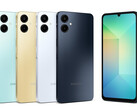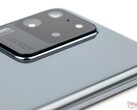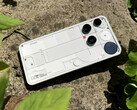Verdict
For very little money, the Samsung Galaxy A06 offers a fairly sturdy and well-designed plastic casing, a fingerprint sensor, a screen with a brightness of around 500 cd/m² without PWM flickering and runtimes that will get you through the day.
Unfortunately, you also have to do without some things: there is no NFC for wireless payment, the performance is not always sufficient for smooth operation and you also have to put up with a blue cast in the color display on the screen.
The cameras are OK for quick snapshots, but the autofocus is often overwhelmed when filming.
At least Samsung also provides Android 16 and security updates until 2029 for its very affordable smartphone.
Pros
Cons
Price and availability
In Germany, you can buy the Samsung Galaxy A06 for just under 90 euros (~$105) online, for example at amazon.de.
Table of Contents
- Verdict
- Specifications
- Case and equipment - Sturdy plastic
- Communication and operation - Galaxy A06 as an LTE cell phone
- Software and sustainability - with update promise
- Cameras - Passable for the low price
- Display - Without PWM flickering
- Performance, emissions and battery life - Little power
- Notebookcheck overall rating
- Possible alternatives in comparison
Specifications
Case and equipment - Sturdy plastic
With a budget of just 90 Euros (~$105), even Samsung can't do magic. Nevertheless, the Galaxy A06 is housed in a relatively sturdy plastic casing with a metal-look frame and a slightly textured and reflective back.
The smartphone is available in dark blue, white, yellow and light blue.
Our model comes with 4 GB RAM and 64 GB mass storage. Depending on the country, models with 6 GB RAM and/or 128 GB mass storage are also possible. Unfortunately, the Galaxy A06 does not support NFC, so contactless payment is not possible. Samsung Pay is nevertheless installed, allowing you to pay by QR code in some countries.
You can use two SIM cards at the same time and also insert a microSD card. The reader works at an average speed.
| SD Card Reader - average JPG Copy Test (av. of 3 runs) | |
| Samsung Galaxy A05s (Angelbird V60) | |
| Motorola Moto G05 (Angelbird V60) | |
| Average of class Smartphone (5.72 - 58.9, n=68, last 2 years) | |
| Samsung Galaxy A06 (Angelbird V60) | |
| Xiaomi Redmi A3 (Angelbird V60) | |
Cross Platform Disk Test (CPDT)
Communication and operation - Galaxy A06 as an LTE cell phone
WiFi 5 is installed as the fastest standard for WLAN and our test device achieved values of around 250 - 350 MBit/s. The connection is also relatively stable, although the data rate drops to 200 MBit/s from time to time.
You have to do without 5G on this very inexpensive cell phone and in the 4G range you have to check whether you can use the mobile Internet when traveling abroad: Many frequencies are not supported.
Due to the relatively slow SoC, there are always waiting times and slow reactions when using the device, but the touchscreen recognizes touches accurately.
A fingerprint sensor is integrated into the standby button, which unlocks the phone after a short wait. Face recognition via the front camera is also possible and works well.
| Networking | |
| Samsung Galaxy A06 | |
| iperf3 transmit AXE11000 | |
| iperf3 receive AXE11000 | |
| Samsung Galaxy A05s | |
| iperf3 transmit AXE11000 | |
| iperf3 receive AXE11000 | |
| Motorola Moto G05 | |
| iperf3 transmit AXE11000 | |
| iperf3 receive AXE11000 | |
| Xiaomi Redmi A3 | |
| iperf3 transmit AXE11000 | |
| iperf3 receive AXE11000 | |
| Average 802.11 a/b/g/n/ac | |
| iperf3 transmit AXE11000 | |
| iperf3 receive AXE11000 | |
| Average of class Smartphone | |
| iperf3 transmit AXE11000 | |
| iperf3 receive AXE11000 | |
Software and sustainability - with update promise
The Samsung Galaxy A06 was actually delivered with Android 14, but there is now an update to Android 15. This has to be deducted from Samsung's update promise, but in this price range it's still a good proposition, considering some phones never receive a single Android OS version update. You can still expect Andorid 16 and a total of four years of security updates here, i.e. until 2029.
Despite the low price, the packaging is plastic-free. Samsung usually provides a wide range of repair manuals and spare parts for private users, but there is no certainty regarding that with the Galaxy A06 as it is missing from the respective European databases.
Cameras - Passable for the low price
You can't expect a top camera in a cell phone for under 100 Euros (~$116), but the main camera in the Galaxy A06 is at least good for snapshots. On a superficial view, the pictures look quite decent, at best a little dull in terms of color reproduction. A closer look reveals a lack of dynamics and sharpness of detail.
In very low light in the lab, only rough details can be made out. The second camera on the back only serves as support for the depth of field and cannot take its own pictures.
The main camera takes videos at a maximum of 1080p and 30 fps, and the autofocus often seems overwhelmed.
There is an 8-megapixel camera at the front for selfies. We like the resulting pictures quite well, even when enlarged.
Image comparison
Choose a scene and navigate within the first image. One click changes the position on touchscreens. One click on the zoomed-in image opens the original in a new window. The first image shows the scaled photograph of the test device.
Main camera Plant Main camera PlantMain camera Low Light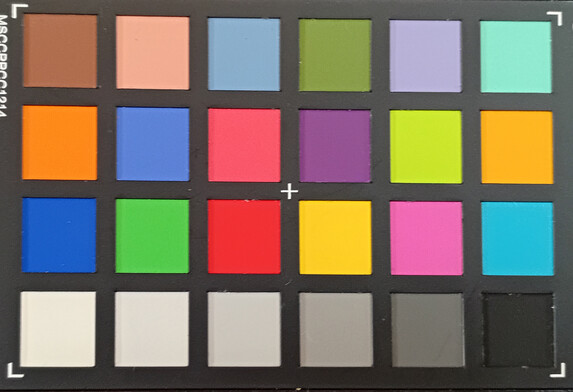
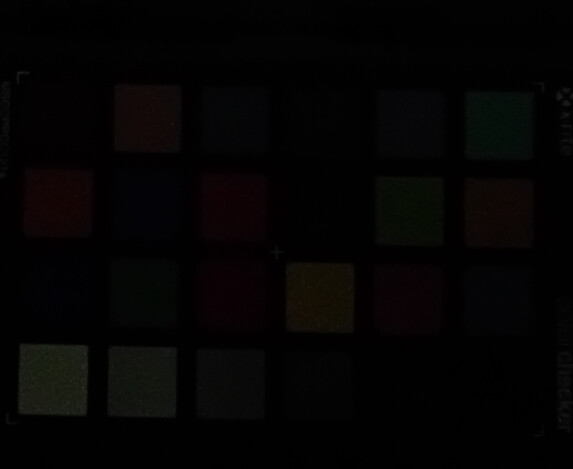
Display - Without PWM flickering
The screen has to make do with a low resolution of 1,600 x 720 pixels. A frame rate of more than 60 Hz is also not possible.
However, the brightness is comparatively high and, at 450 - 505 cd/m² at its peak, is still suitable for cloudy days outdoors. However, you have to live with a clear blue cast in the color reproduction.
We did not notice PWM flickering on the inexpensive smartphone.
| |||||||||||||||||||||||||
Brightness Distribution: 89 %
Center on Battery: 505 cd/m²
Contrast: 953:1 (Black: 0.53 cd/m²)
ΔE ColorChecker Calman: 5.94 | ∀{0.5-29.43 Ø4.79}
ΔE Greyscale Calman: 6.2 | ∀{0.09-98 Ø5}
91.1% sRGB (Calman 2D)
Gamma: 2.116
CCT: 8333 K
| Samsung Galaxy A06 IPS, 1600x720, 6.7" | Samsung Galaxy A05s PLS LCD, 2400x1080, 6.7" | Motorola Moto G05 IPS, 1612x720, 6.6" | Xiaomi Redmi A3 IPS, 1650x720, 6.7" | |
|---|---|---|---|---|
| Screen | 16% | 35% | 21% | |
| Brightness middle (cd/m²) | 505 | 520 3% | 370 -27% | 368 -27% |
| Brightness (cd/m²) | 475 | 467 -2% | 358 -25% | 359 -24% |
| Brightness Distribution (%) | 89 | 84 -6% | 92 3% | 92 3% |
| Black Level * (cd/m²) | 0.53 | 0.36 32% | 0.24 55% | 0.28 47% |
| Contrast (:1) | 953 | 1444 52% | 1542 62% | 1314 38% |
| Colorchecker dE 2000 * | 5.94 | 5.25 12% | 2.09 65% | 3.76 37% |
| Colorchecker dE 2000 max. * | 21.63 | 10.48 52% | 5.49 75% | 7.19 67% |
| Greyscale dE 2000 * | 6.2 | 7.1 -15% | 1.7 73% | 4.5 27% |
| Gamma | 2.116 104% | 2.25 98% | 2.317 95% | 2.277 97% |
| CCT | 8333 78% | 8660 75% | 6405 101% | 7305 89% |
* ... smaller is better
Screen Flickering / PWM (Pulse-Width Modulation)
| Screen flickering / PWM not detected | |||
In comparison: 53 % of all tested devices do not use PWM to dim the display. If PWM was detected, an average of 8152 (minimum: 5 - maximum: 343500) Hz was measured. | |||
Display Response Times
| ↔ Response Time Black to White | ||
|---|---|---|
| 21.3 ms ... rise ↗ and fall ↘ combined | ↗ 11.9 ms rise | |
| ↘ 9.4 ms fall | ||
| The screen shows good response rates in our tests, but may be too slow for competitive gamers. In comparison, all tested devices range from 0.1 (minimum) to 240 (maximum) ms. » 46 % of all devices are better. This means that the measured response time is similar to the average of all tested devices (20.3 ms). | ||
| ↔ Response Time 50% Grey to 80% Grey | ||
| 35.8 ms ... rise ↗ and fall ↘ combined | ↗ 20.7 ms rise | |
| ↘ 15.1 ms fall | ||
| The screen shows slow response rates in our tests and will be unsatisfactory for gamers. In comparison, all tested devices range from 0.165 (minimum) to 636 (maximum) ms. » 49 % of all devices are better. This means that the measured response time is worse than the average of all tested devices (31.7 ms). | ||
Performance, emissions and battery life - Little power
The MediaTek Helio G85 SoC does not offer any major performance reserves and often falters in everyday use. However, other phones in this price range don't do any better and the Galaxy A06 can even score a few more points in the benchmarks from time to time. However, the smartphone is unsuitable for demanding apps.
There is hardly any noticeable warming of the casing even after long periods of load and the performance is maintained in the stress tests.
The small speaker achieves a reasonable volume, but sounds clearly treble-heavy. The sound is still reasonably acceptable, but fans of good music will prefer to connect speakers or headphones. This can be done via USB or Bluetooth. Apart from Samsung's own codec, there are hardly any Hi-Res versions available for wireless audio transmission.
The speaker has a capacity of 5,000 mAh and can be recharged with up to 25 watts. This takes less than 2 hours. In our Wi-Fi test, the smartphone achieved a decent 15:33 hours, which should get you through the day even with frequent use.
| Samsung Galaxy A06 | Samsung Galaxy A05s | Motorola Moto G05 | Xiaomi Redmi A3 | Average 64 GB eMMC Flash | Average of class Smartphone | |
|---|---|---|---|---|---|---|
| AndroBench 3-5 | 14% | 15% | -26% | -20% | 561% | |
| Sequential Read 256KB (MB/s) | 295.4 | 441.25 49% | 289.9 -2% | 270.1 -9% | 277 ? -6% | 2222 ? 652% |
| Sequential Write 256KB (MB/s) | 166.3 | 114.19 -31% | 246.8 48% | 118.2 -29% | 178.4 ? 7% | 1838 ? 1005% |
| Random Read 4KB (MB/s) | 74 | 102.99 39% | 100.8 36% | 65.5 -11% | 60.7 ? -18% | 295 ? 299% |
| Random Write 4KB (MB/s) | 86.8 | 84.71 -2% | 67.6 -22% | 41 -53% | 33.8 ? -61% | 336 ? 287% |
(+) The maximum temperature on the upper side is 39.6 °C / 103 F, compared to the average of 35.2 °C / 95 F, ranging from 21.9 to 247 °C for the class Smartphone.
(±) The bottom heats up to a maximum of 40.7 °C / 105 F, compared to the average of 34 °C / 93 F
(+) In idle usage, the average temperature for the upper side is 26.5 °C / 80 F, compared to the device average of 32.9 °C / 91 F.
3DMark Steel Nomad Stress Test
| 3DMark - Wild Life Stress Test Stability | |
| Motorola Moto G05 | |
| Samsung Galaxy A05s | |
| Samsung Galaxy A06 | |
Samsung Galaxy A06 audio analysis
(+) | speakers can play relatively loud (84.6 dB)
Bass 100 - 315 Hz
(-) | nearly no bass - on average 31% lower than median
(±) | linearity of bass is average (11.2% delta to prev. frequency)
Mids 400 - 2000 Hz
(±) | reduced mids - on average 5.7% lower than median
(±) | linearity of mids is average (7.2% delta to prev. frequency)
Highs 2 - 16 kHz
(±) | higher highs - on average 8.3% higher than median
(±) | linearity of highs is average (8.5% delta to prev. frequency)
Overall 100 - 16.000 Hz
(±) | linearity of overall sound is average (26.5% difference to median)
Compared to same class
» 67% of all tested devices in this class were better, 6% similar, 27% worse
» The best had a delta of 11%, average was 35%, worst was 134%
Compared to all devices tested
» 81% of all tested devices were better, 4% similar, 15% worse
» The best had a delta of 4%, average was 24%, worst was 134%
Xiaomi Redmi A3 audio analysis
(±) | speaker loudness is average but good (78.8 dB)
Bass 100 - 315 Hz
(-) | nearly no bass - on average 36.2% lower than median
(±) | linearity of bass is average (9.8% delta to prev. frequency)
Mids 400 - 2000 Hz
(±) | higher mids - on average 5.9% higher than median
(±) | linearity of mids is average (7.7% delta to prev. frequency)
Highs 2 - 16 kHz
(+) | balanced highs - only 4.1% away from median
(±) | linearity of highs is average (7.5% delta to prev. frequency)
Overall 100 - 16.000 Hz
(±) | linearity of overall sound is average (28.3% difference to median)
Compared to same class
» 73% of all tested devices in this class were better, 5% similar, 22% worse
» The best had a delta of 11%, average was 35%, worst was 134%
Compared to all devices tested
» 85% of all tested devices were better, 3% similar, 12% worse
» The best had a delta of 4%, average was 24%, worst was 134%
| Samsung Galaxy A06 5000 mAh | Samsung Galaxy A05s 5000 mAh | Motorola Moto G05 5200 mAh | Xiaomi Redmi A3 5000 mAh | |
|---|---|---|---|---|
| Battery runtime | -3% | 4% | -4% | |
| WiFi v1.3 (h) | 15.6 | 15.1 -3% | 16.2 4% | 15 -4% |
| Reader / Idle (h) | 36.5 | |||
| H.264 (h) | 16 | |||
| Load (h) | 4.7 |
Notebookcheck overall rating
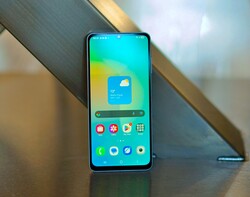
A very inexpensive phone that you have to do without a few things.
In return, it has a pretty and quite stable chassis, a comparatively bright display without PWM and good battery life.
Samsung Galaxy A06
- 08/25/2025 v8
Florian Schmitt
Possible alternatives in comparison
Image | Model / Review | Price | Weight | Drive | Display |
|---|---|---|---|---|---|
| Samsung Galaxy A06 Mediatek Helio G85 ⎘ ARM Mali-G52 MP2 ⎘ 4 GB Memory, 64 GB eMMC | Amazon: $109.97 List Price: 90€ | 189 g | 64 GB eMMC Flash | 6.70" 1600x720 262 PPI IPS | |
| Samsung Galaxy A05s Qualcomm Snapdragon 680 4G ⎘ Qualcomm Adreno 610 ⎘ 4 GB Memory, 64 GB eMMC | Amazon: $129.87 | 194 g | 64 GB eMMC Flash | 6.70" 2400x1080 393 PPI PLS LCD | |
| Motorola Moto G05 Mediatek Helio G81 ⎘ ARM Mali-G52 MP2 ⎘ 4 GB Memory, 64 GB eMMC | Amazon: 1. $109.00 Motorola Moto G05 XT2523-2 D... 2. $4.99 Mr.Shield Screen Protector c... 3. $129.99 Motorola Moto G Power 5G | 2... List Price: 130€ | 189 g | 64 GB eMMC Flash | 6.56" 1612x720 269 PPI IPS | |
| Xiaomi Redmi A3 Mediatek Helio G36 ⎘ PowerVR GE8320 ⎘ 3 GB Memory, 64 GB eMMC | Amazon: List Price: 120€ | 193 g | 64 GB eMMC Flash | 6.71" 1650x720 268 PPI IPS |
Transparency
The selection of devices to be reviewed is made by our editorial team. The test sample was provided to the author as a loan by the manufacturer or retailer for the purpose of this review. The lender had no influence on this review, nor did the manufacturer receive a copy of this review before publication. There was no obligation to publish this review. As an independent media company, Notebookcheck is not subjected to the authority of manufacturers, retailers or publishers.
This is how Notebookcheck is testing
Every year, Notebookcheck independently reviews hundreds of laptops and smartphones using standardized procedures to ensure that all results are comparable. We have continuously developed our test methods for around 20 years and set industry standards in the process. In our test labs, high-quality measuring equipment is utilized by experienced technicians and editors. These tests involve a multi-stage validation process. Our complex rating system is based on hundreds of well-founded measurements and benchmarks, which maintains objectivity. Further information on our test methods can be found here.




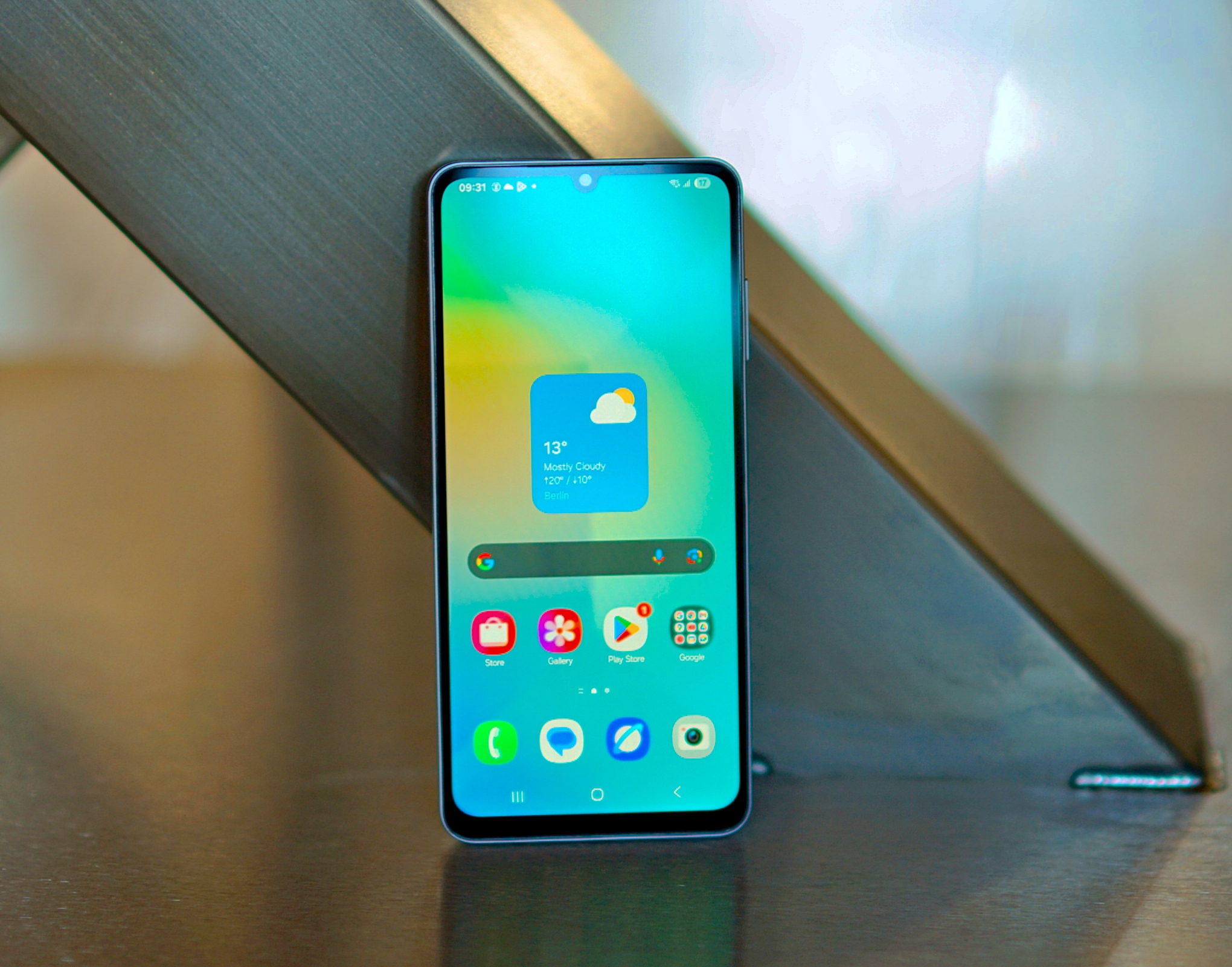

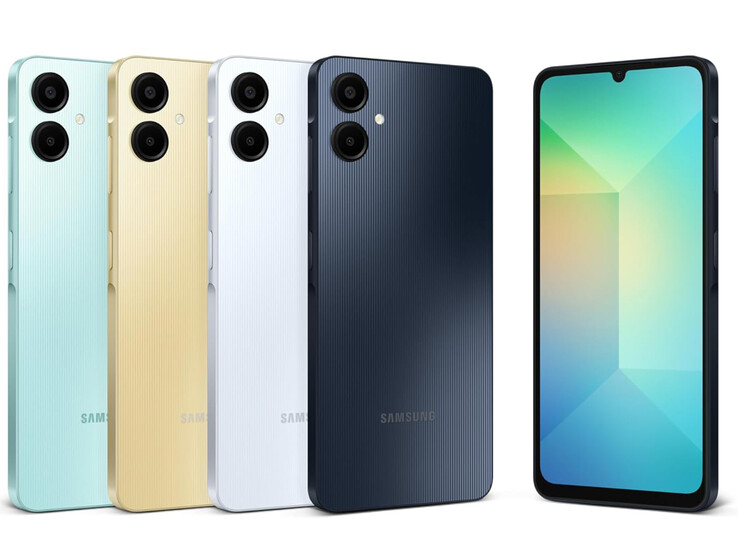







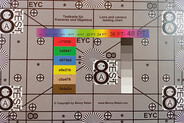




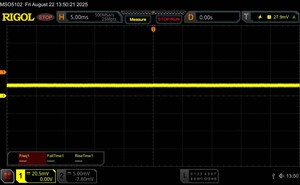
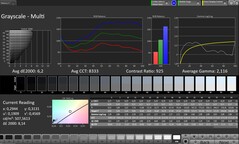
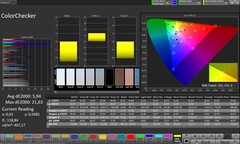
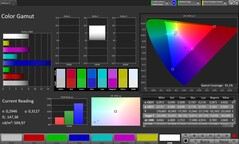
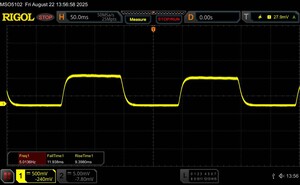
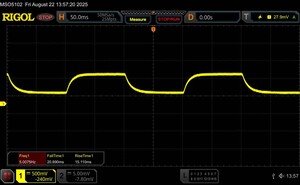
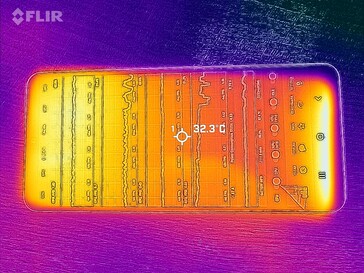
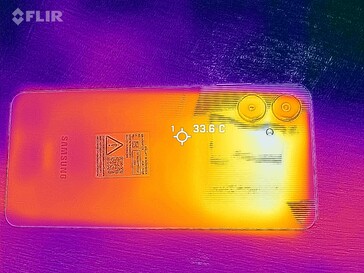
 Total Sustainability Score:
Total Sustainability Score: 



